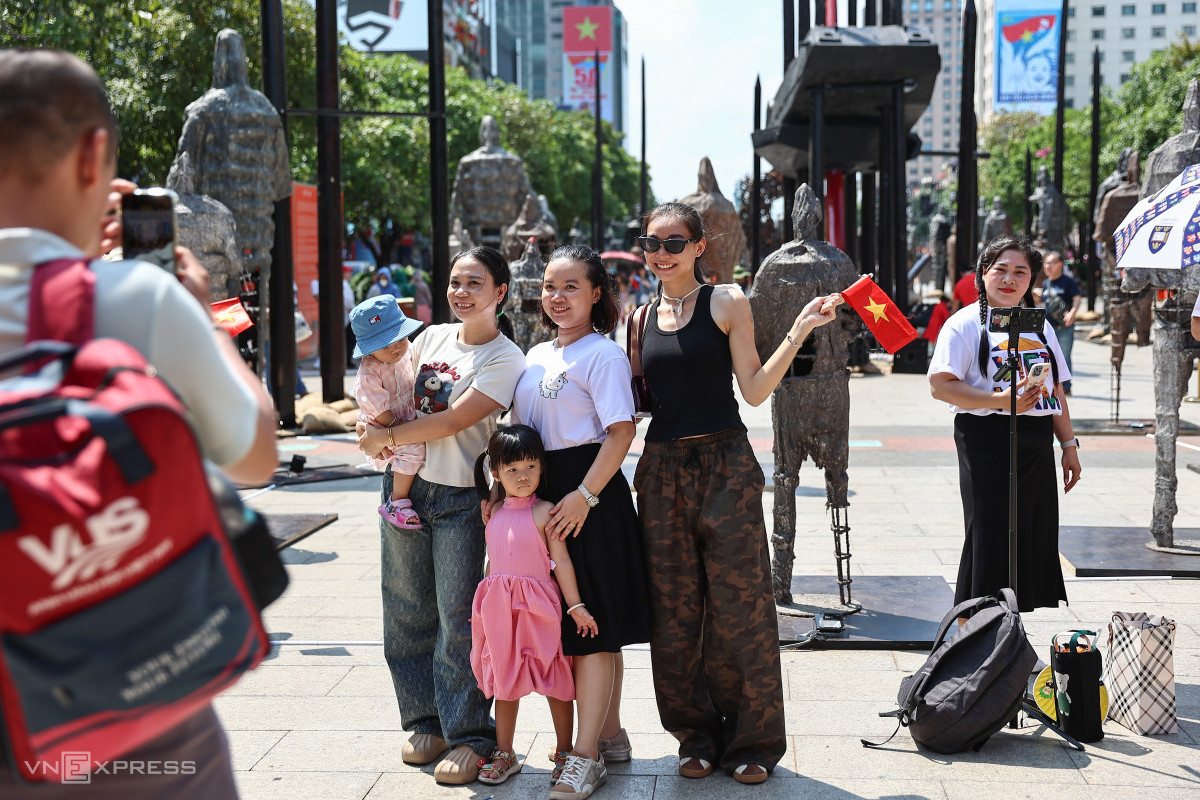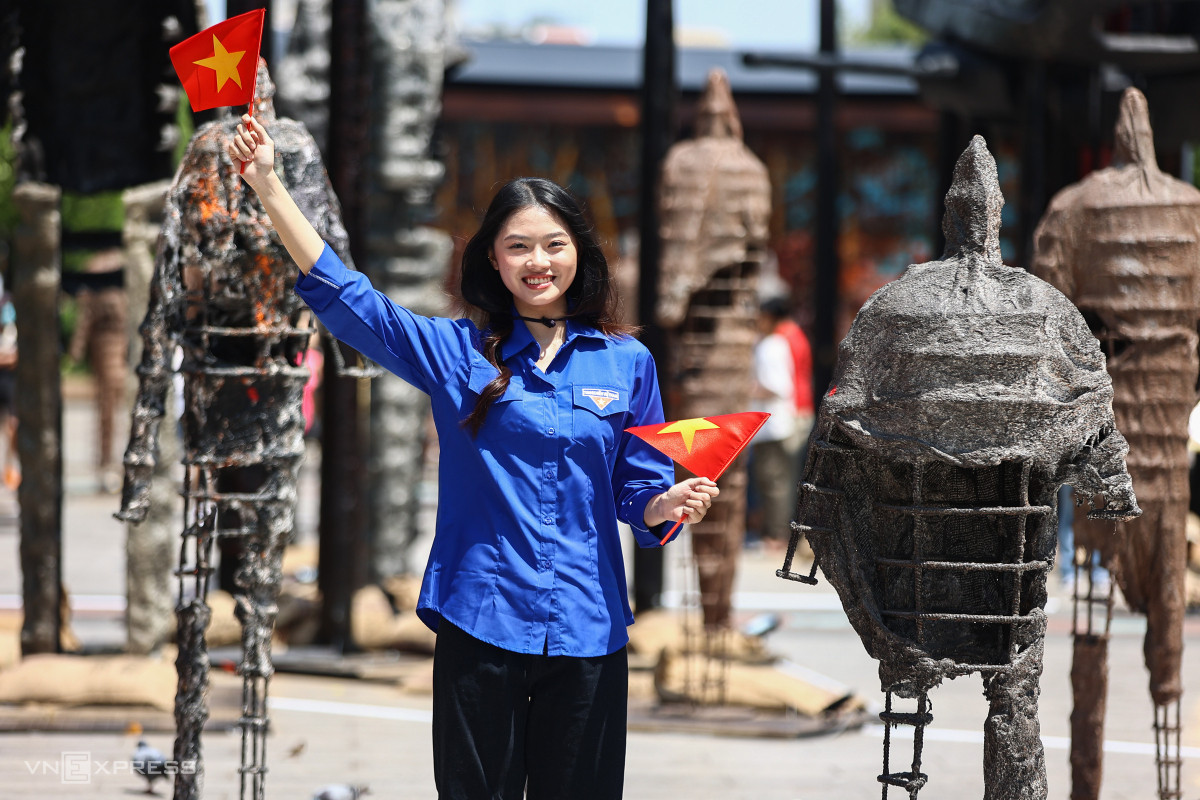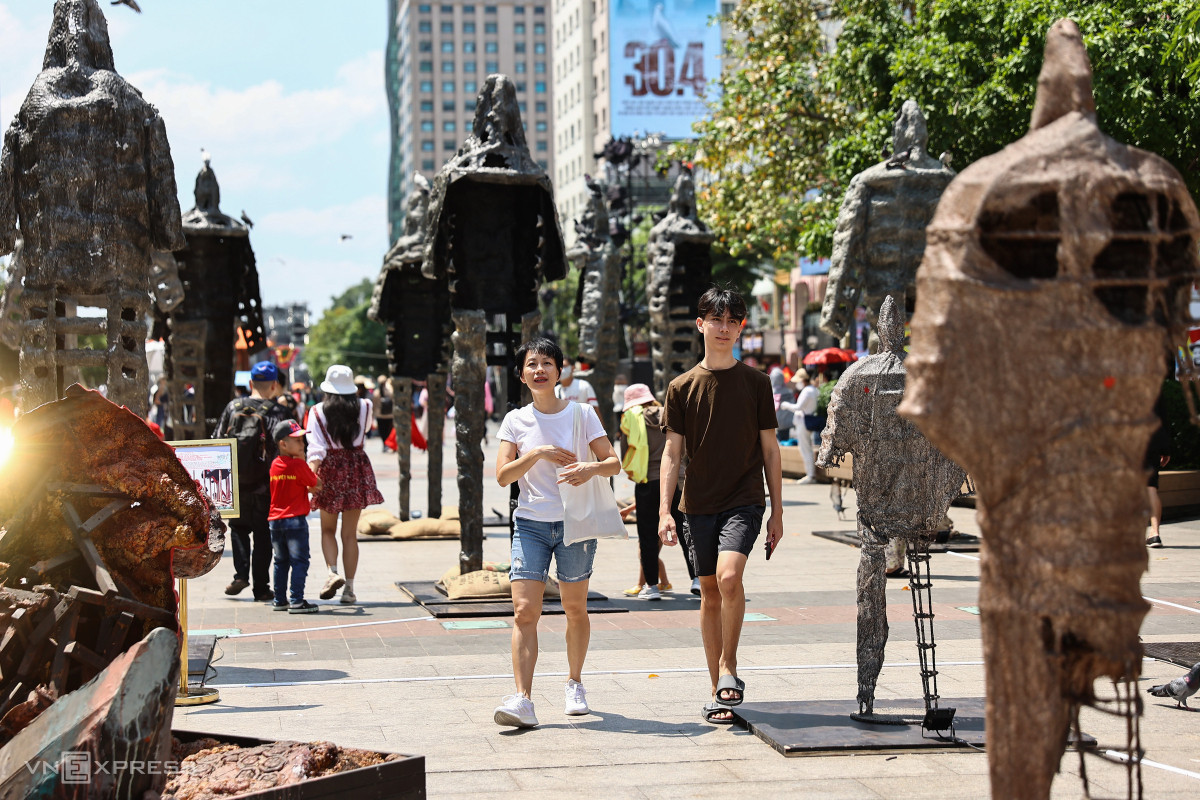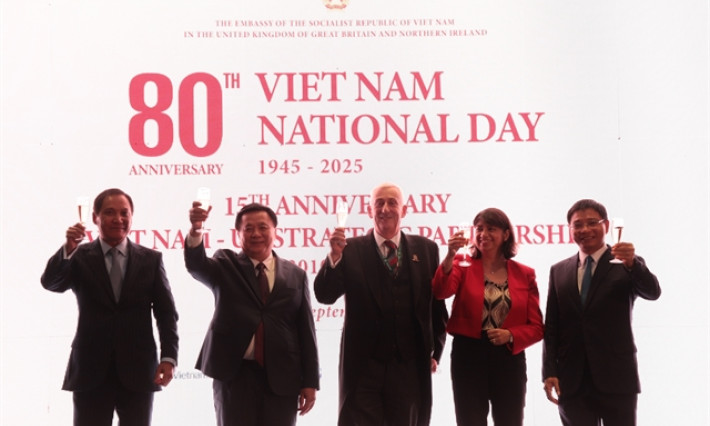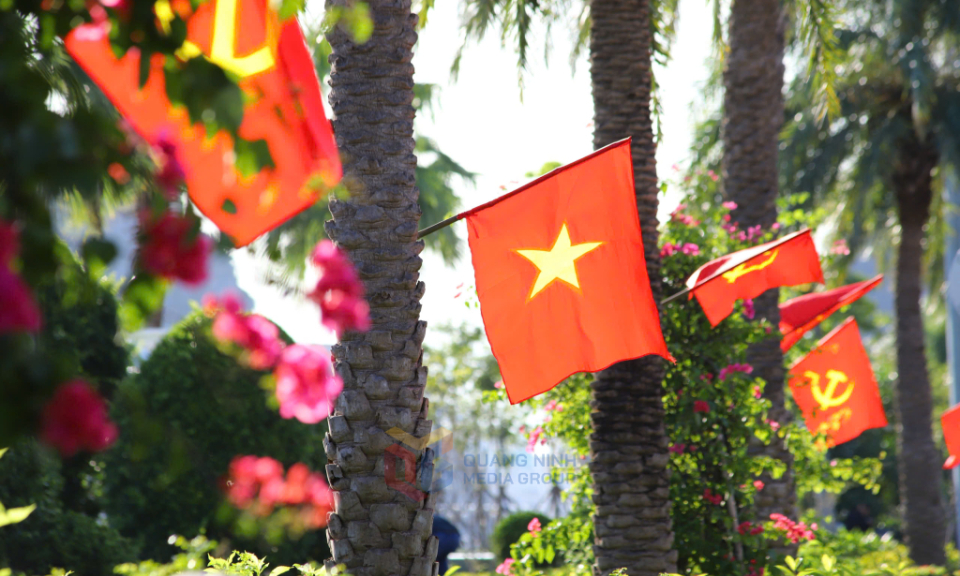A nation remembered: HCMC exhibition honors Vietnam's victories
As part of Vietnam’s 50th reunification anniversary celebration, an art exhibition in Ho Chi Minh City combines war history with contemporary sculpture, drawing crowds to explore victories from the Battle of Bach Dang in 1288 to the Vietnam War in 1975.

On the morning of April 20, visitors were drawn to 100 sculptures and installations on display at the exhibition "From the Victory of Bach Dang to the Great Victory of April 30, 1975," held at Nguyen Hue Walking Street.
The exhibition showcases artworks by artist Le Huu Hieu, featuring sculptures ranging from 2 to 6 meters in height, spread across more than 2,000 square meters. According to the artist, the concept took 10 years to develop and two years to bring to life. His goal is to reimagine and honor victories in Vietnam's history.
Hieu, 43, also known by his artist name Henry Le, is recognized for his style that blends surrealism and expressionism, using diverse materials. He has held exhibitions both in Vietnam and internationally. In 2024, he became the first Vietnamese artist invited to the 60th Venice Biennale, one of the most significant events in the global contemporary art scene.

A highlight of the exhibition is the installation of the Bach Dang stake field and an inverted tank model. The tank, modeled after the M24 Chaffee, originally provided by the U.S. to French forces in 1953 and now stationed in Muong Thanh Field, Dien Bien Province, is recreated at full scale using iron and composite, weighing about three tons. It evokes the memory of the Battle of Dien Bien Phu in 1954, when Vietnamese fighters won a battle against the French, which helped end French rule in Indochina and started the path to Vietnam's independence.
"This work is striking. Everyone I saw at the exhibition found it unique," said Phuong Thao, 40, after taking family photos with the installations.
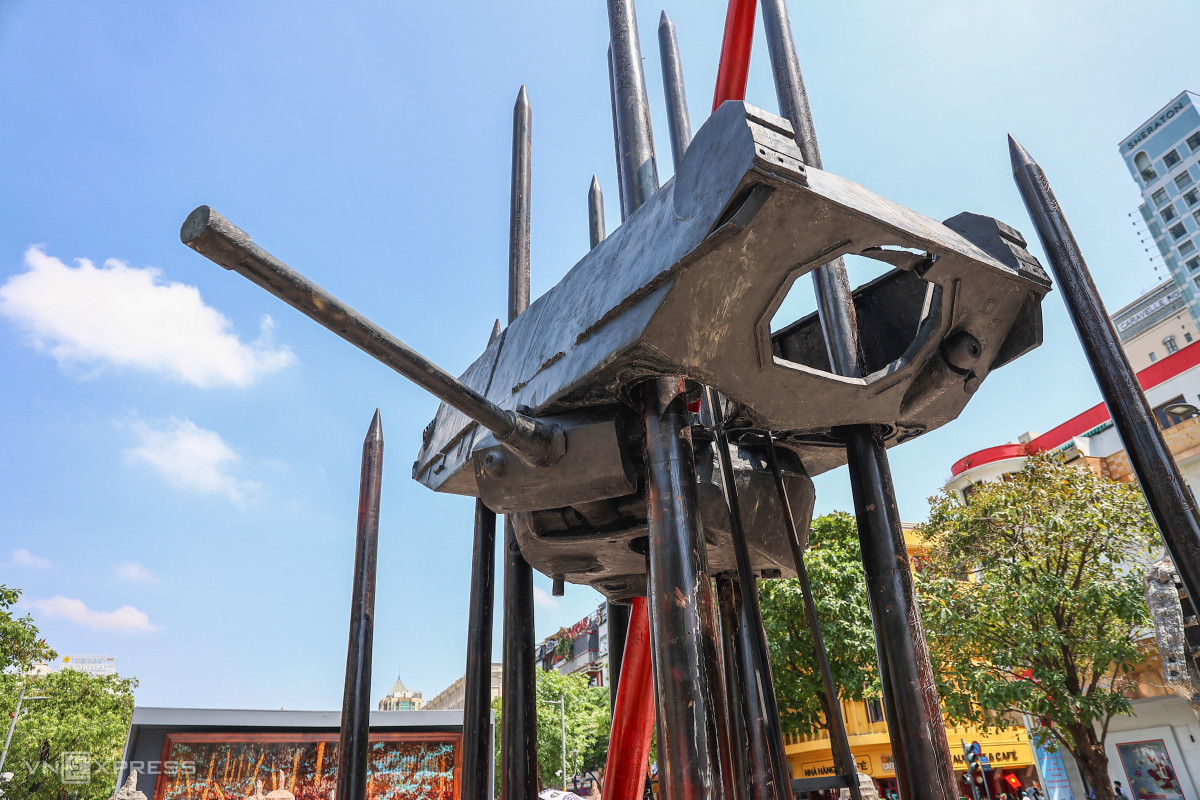
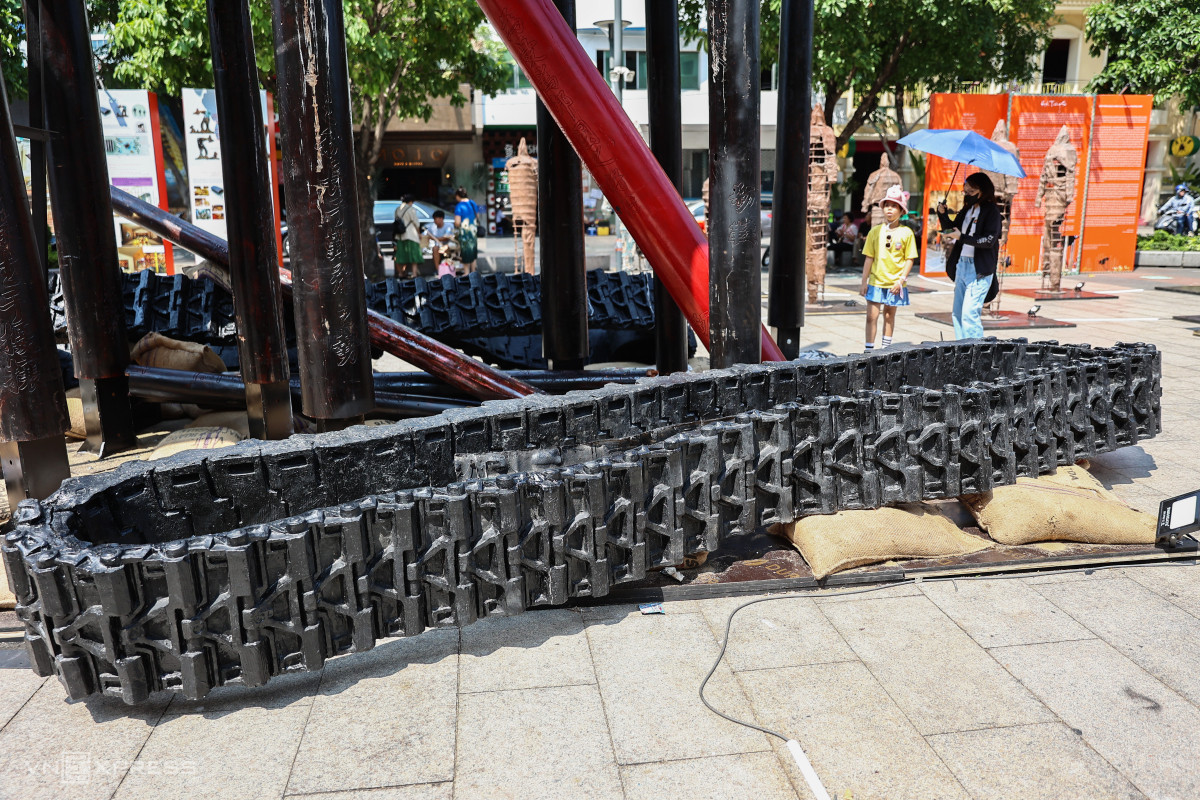
According to Hieu, beyond its visual impact, the tank placed atop the wooden stakes symbolizes strength from past generations. It also draws a connection to the Operation Linebacker II in December 1972, when Hanoi was hit by 10,000 tons of U.S. bombs during 12 days and nights.
The installation features tank treads arranged around the stakes to complete the imagery.
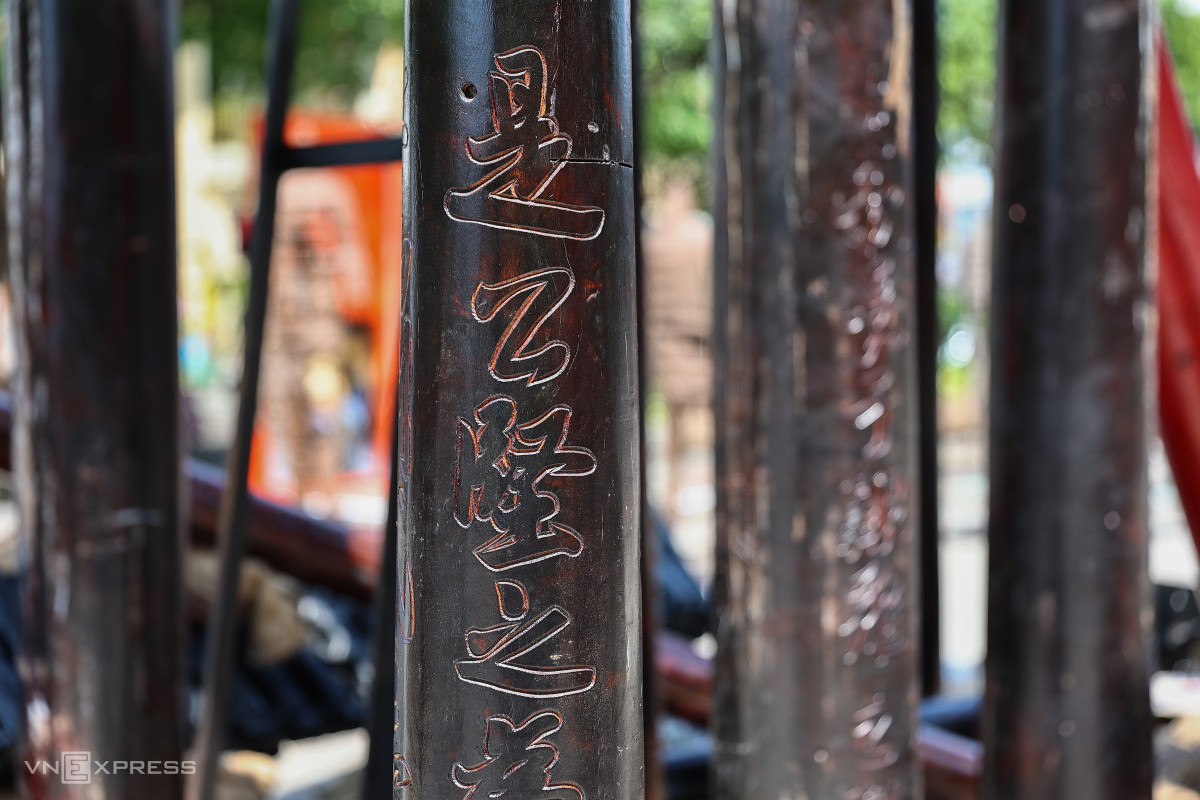
About 30 stakes, crafted from eucalyptus wood harvested near the upper Bach Dang River, stand 5.6 to 9 meters tall, with a combined weight of roughly 60 tons.
Each stake bears Sino-Vietnamese characters script excerpts from the "Proclamation to the Officers". It was a speech written by General Tran Hung Dao (1228–1300) to inspire his soldiers to be brave and protect their country from invaders.
Atop the stakes are carvings of the phrase "Sat That" (Kill the Mongols), symbolizing strength watching over future generations. The text is painted in red lacquer and the stakes are finished with lacquer techniques.
These stakes represent the 1288 Battle of Bach Dang, during the third Mongol invasion of the Tran Dynasty (1225–1400). Under the command of Tran Hung Dao, Vietnamese forces used tidal knowledge to plant underwater stakes and destroy the Mongol fleet on the Bach Dang River (modern-day Quang Ninh Province - Hai Phong City), marking one of Vietnam's most celebrated military triumphs.
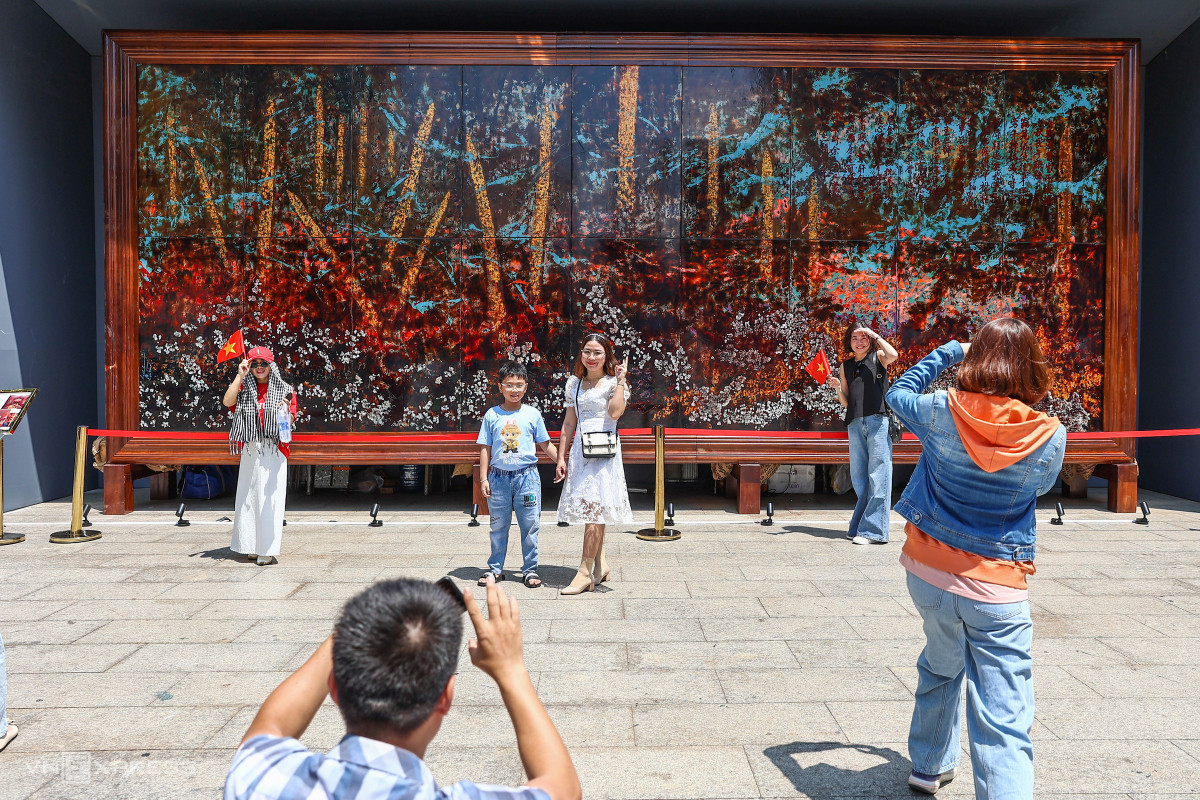
Nearby, a lacquer painting of the "Proclamation to the Officers" also draws attention for its scale. The artwork measures 3.8 meters in height and 9.5 meters in length, composed of 18 joined panels.
"The Proclamation to the Officers", written by Tran Hung Dao around 1284 before the second Mongol invasion, is a stirring call to arms. It emphasizes patriotism and the spirit of national defense, and is hailed as a literary masterpiece of Vietnam's medieval period.
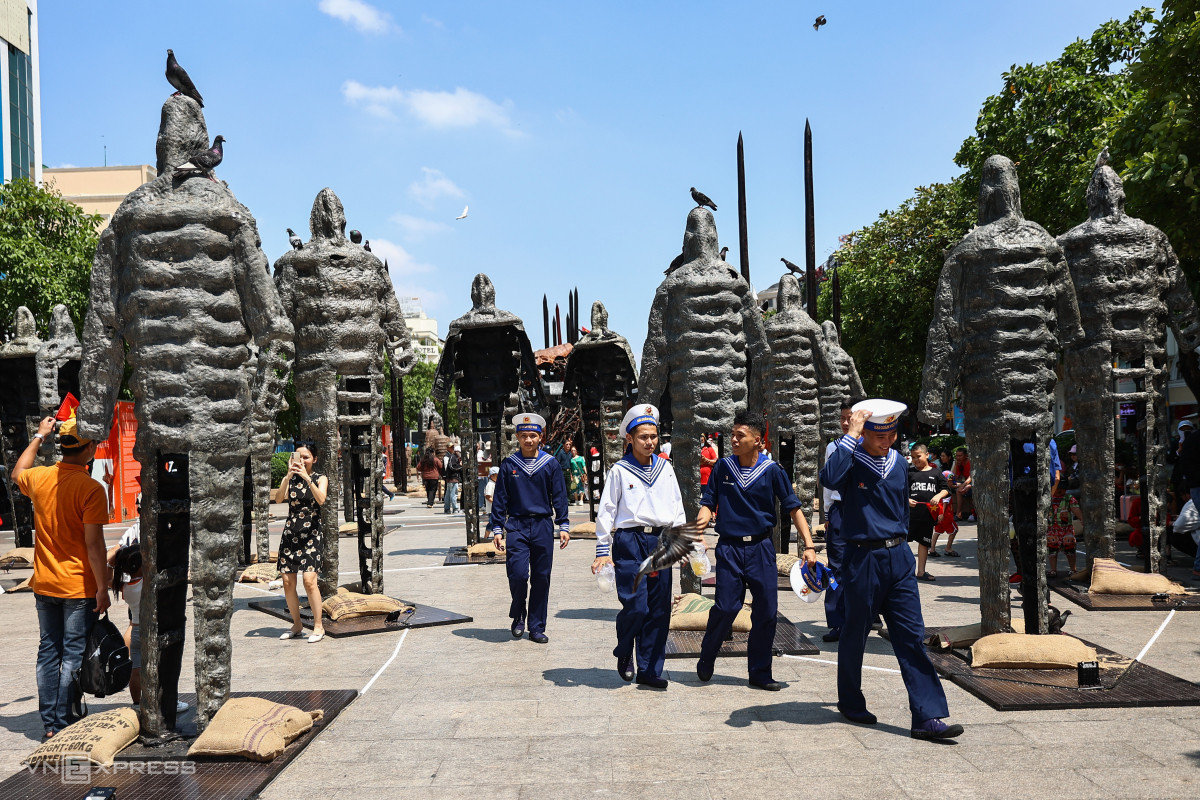

The space also features 27 aluminum statues, each 3.3 to 4.5 meters tall, with a total weight of 25 tons. The statues are abstract, without facial features or expressions, serving as metaphors for the sacrifices of fallen heroes.

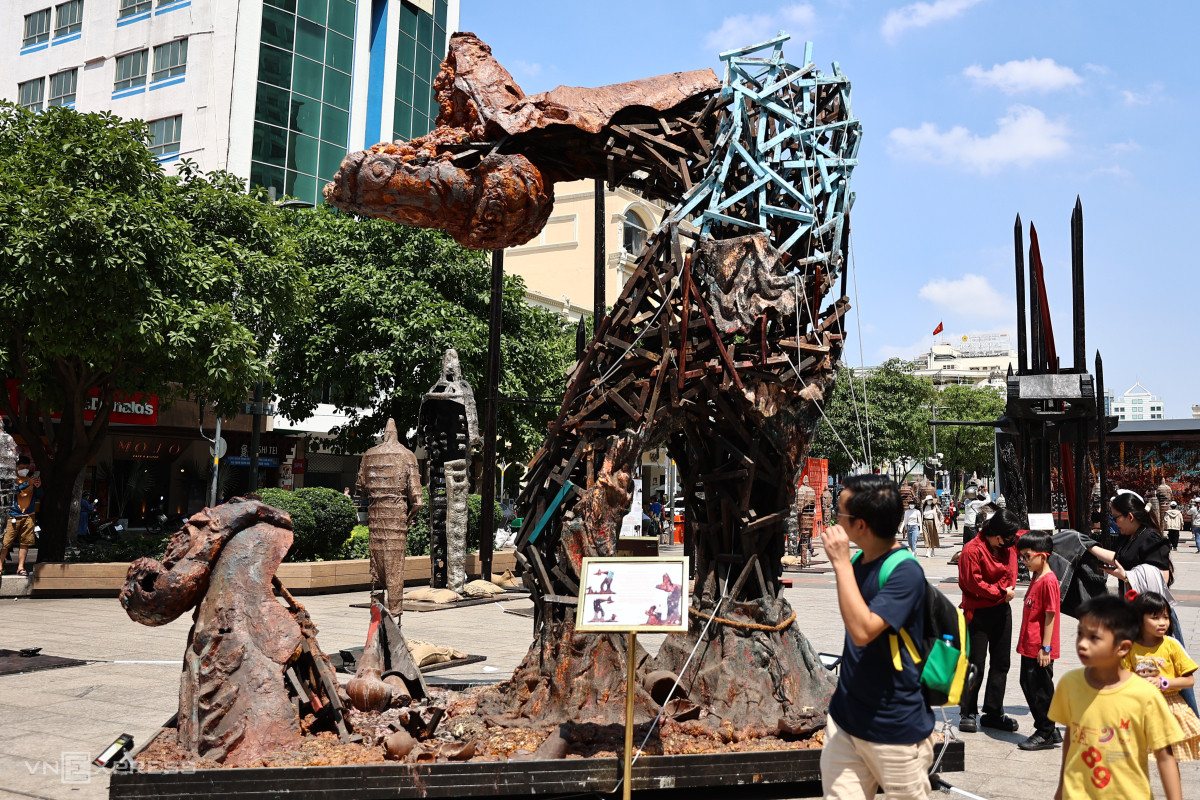

The largest piece, titled The Guardian Spirit, depicts a deity protecting the Vietnamese nation. The 6-meter-tall, 4-meter-long work weighs 3 tons and is made from materials including jackfruit wood and ceramics. Its layered wood blocks, traditional motifs, and pottery elements evoke a connection between the past, present, and future.
